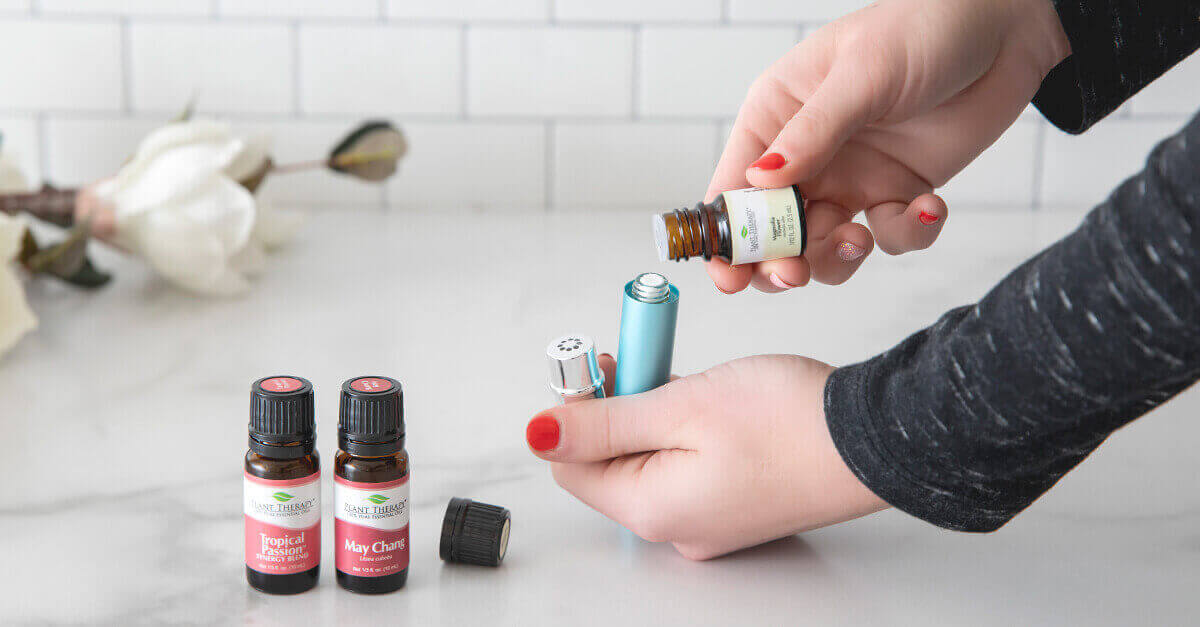As parents, we face many challenges throughout our child’s life. Sometimes it’s simple things like what they will eat or what they will wear. Other times, it may not be as simple, such as how to help them with Advanced Calculus (that’s my wife’s job) or how to help them heal from their first broken heart. Or sometimes, it can be a combination of the two, simple and complicated…. like figuring out how to use your non-KidSafe essential oils when you have children.
Before we dive in on the subject, it’s important to first have an understanding of what KidSafe really means when it comes to our essential oils. For this, I recommend going back to the basics and checking out our blog post What Does KidSafe REALLY Mean? and then coming back here to learn more about how to use your oils that don’t sport the KidSafe logo.

Personal Inhalers
One of the best ways to use non-KidSafe essential oils around your kids is to use a personal inhaler as there is almost no exposure for your children. For those who have never used a personal inhaler before, check out our blog post on how to use your personal aromatherapy inhaler. Just like with all your essential oils, it’s important to store your personal inhalers where children cannot reach them.
Personal Inhaler Jewelry
Personal aromatherapy jewelry is another great way to reap the benefits of your essential oils. But there are some extra considerations to keep in mind. Just like you, with close proximity, children will be inhaling the essential oils. So don’t use your aromatherapy jewelry if you have little ones that you hold often or like to snuggle. Maybe save those necklaces and bracelets for a date night when it’s just you and other adults.

Topically
Using essential oils topically is another easy way to use non-KidSafe essential oils on yourself with few risks to your children. However, there are some safety considerations to keep in mind. Just like with personal inhaler jewelry, close proximity to children can expose them to the essential oils. If you have small children that you hold for long periods of time, it’s best to save this method of essential oil application for nighttime, or when your children are not around. It’s also best to apply your non-KidSafe essential oils to covered parts of the body that will not come into contact with your children’s skin. This lessens the risk of unnecessary exposure as well.

Diffusion
Contrary to what you might think, diffusion is an option for your non-KidSafe essential oils. There are just some limitations on how and when you can diffuse and this depends exclusively on the specific oil. Some oils are not KidSafe due entirely to topical restrictions. In these cases, diffusion will be just fine. Other oils, such as those high in 1,8-Cineole, can be diffused with the following considerations in mind: To diffuse non-KidSafe essential oils that have inhalation concerns, it’s important to do it when they are not home, or they are in a different room and will not be in the room you are diffusing in for at least 1-2 hours. By waiting 1-2 hours before introducing them to the area you were diffusing in, it allows the essential oils to settle and fade reducing the risk of exposure to your children. This means you’re free to diffuse while your kids are at school or after they’ve gone to bed and you’ve got your bedroom all to yourself. Examples of oils that fall in this category would be Rosemary and Peppermint.

General Safety Considerations
Even though there are safe ways of using non-KidSafe essential oils around children, it’s not always necessary. KidSafe essential oils are just as effective for adults as they are for children with fewer risks. It may not be a bad idea to stick with KidSafe essential oils when you can and to save the non-KidSafe oils for when you really need them. This is the best way to eliminate accidental exposure for your children. These tips are here to help you navigate the world of essential oils when you have children so you can make the right choice for you and your family.
*The usage methods described above do not take into consideration other circumstances such as pregnancy or breastfeeding. If you are pregnant or breastfeeding it’s important to follow a whole separate set of guidelines which we’ve shared here and here.









